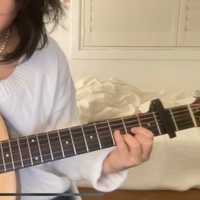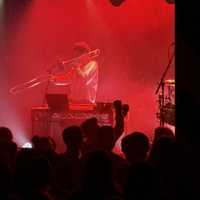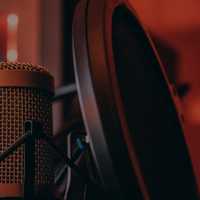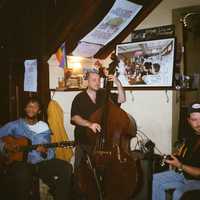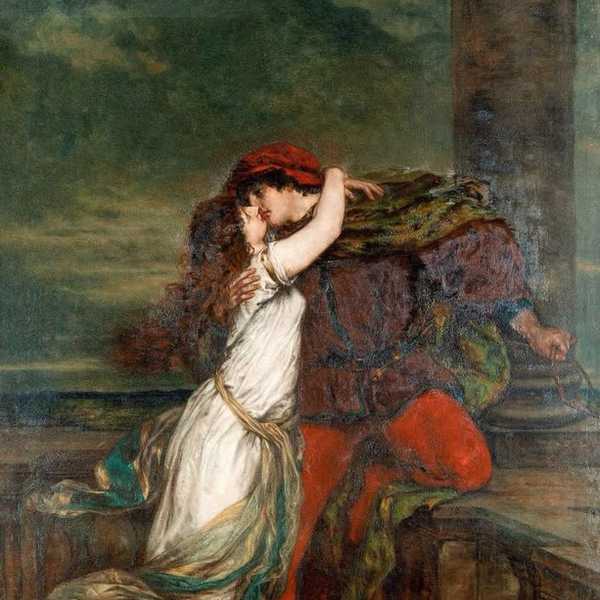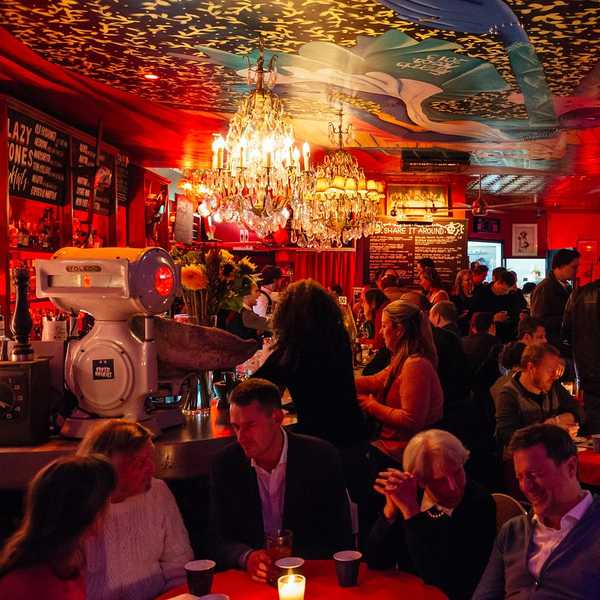Approx. 19 minute read
Maryanne Piper is a profound collaborator whose work output includes diverse elements from women’s composition and performance initiatives, to a literacy program that uses music a a vehicle and working on Jazz, Classical and Cultural music with stellar musicians from the shores of Aotearoa, the Conservatoires of Europe and her home town in Regional NSW.
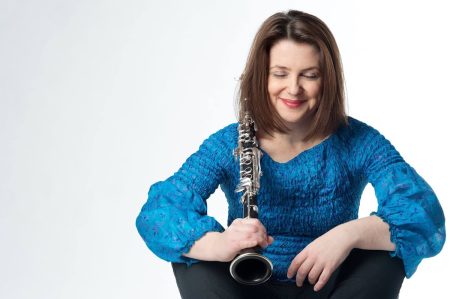
Maryanne eloquently articulates many of the challenges and barriers in music that need to be acknowledged and addressed for a more equitable industry. She also shares some wonderful advice for anyone with their heart set on pursuing a career in music. Keep reading to learn more from the deep insights and experience of Maryanne Piper.
Sonia de Freitas: Hi Maryanne, how are you and where does our interview find you today?
Maryanne Piper: Hi Sonia! Thanks for including me in this series. It’s a really great initiative, and much needed. I’m well, thank you, considering the past year and am making my way through what has turned out to be an incredibly busy 2021. Throughout the pandemic I’ve been based with family in the New England North West region of NSW. I let my apartment in Germany go in November 2019, as I was travelling so much. This actually turned out to be a blessing in disguise with the onslaught of 2020. Even though the past year has thrown plenty of curve balls & challenges at everyone, I have been grateful for the time to spend with family in my hometown once again. It’s been a great opportunity to recoup, slow down, enjoy and experience my people again. I’ve also found it extremely creative. With more time, there’s always more ideas!
SdF: Can you tell me about your journey in music? When did you know that you were going to make music your career?
MP: My journey most definitely hasn’t been what most would consider a straight line, but that’s how life works mostly, right? I was born near Brisbane, my childhood was mostly in a very small town in remote NSW, then I did the majority of my schooling in Tamworth before moving on to Brisbane and Sydney for university. I was very lucky to be in the right place at the right time – especially in terms of growing up in regional NSW in the 80’s & 90’s. Tamworth at that time was a busy services/education centre and had an excellent Regional Conservatorium of Music with connections to Sydney and other tertiary institutions. It was led in those years by an outstanding musician and director, Mr Derek Taylor OBE, who had a prominent career in England serving the Queen among many others before coming out to Australia with his wife (a singer at the National Opera) to develop music education in the region of New England North West. There are a lot of students that went through the organisation around the same who went on to study music at tertiary level, and who have also gone on to busy careers in music, some also international. It was a very fruitful period in the region, with music education complimented in all of the region’s schools. We had fantastic teachers who were really dedicated, and a multitude of ensembles on offer, all playing at high levels. That has changed quite a lot in recent years in Australia, I’ve found. Schools have steered away from a music/arts focus to STEM. However, music teaches so much. All of those students who were involved in an intensive music education in our area were achievers academically as well. The benefits are too large to ignore really.
I’ve always been involved with music since I was about 5 years of age, to differing degrees. I got a keyboard for Christmas one year and that’s where it all started, not that I was an avid practiser when I was young. But, I really enjoyed it and responded very intensely to the music I listened to. When I began my involvement with the Regional Conservatorium here in high school, that’s when music as a career became clear to me. My training was mostly classical to begin with (what was available), but complimented by really great non-professional musicians in the area who did a lot with Jazz and other styles. There were plenty of opportunities to play and learn. After two classical degrees (including overseas study), I gradually found my way to more creative outlets in the music field. While based in The Netherlands, I came into contact with so many fantastic crossover, contemporary, Jazz, improvising musicians and my focus began to shift. I really enjoyed the creativity involved with cross-disciplinary collaboration (which I’ve gone on to do a lot of in Europe, it’s sort of its home in a way), however went on to continue studying in the genres of Jazz, world music, improvisation, composition and creative music. When I moved to Germany, that’s when the dots really started to connect. For me Jazz was always a connective language. Although I also love the straight ahead “Jazz-Police” genre, I’ve always had eclectic tastes in everything, including music, and immersing myself in the Jazz language and allowing myself to improvise was a way to bring all of those influences together: world music styles, contemporary, avant-garde, more popular styles, plus my classical training. I’ve met so many creative, really fantastic musicians along the way, and of course you always synthesise something from everyone. Your palette just becomes wider and wider. Having a structure like Jazz really enables you to put the pieces together how you want to.
SdF: Can you tell me about your creative process when producing your work?
MP: Creative process is always a surprise, every time! Because I do so many different things with music (my own music, plus a lot of collaborations with either theatre, dance, film or visual arts, presenting other people’s music, music in outreach settings, sound art, installations, larger ensembles etc., there’s always a different process involved. It also depends on the colleagues you’re working with and the chemistry. With my own work it also varies quite a lot. I can start with a melody or melodic element, sometimes I have a rhythmic texture that comes through. Mostly its external inspiration that triggers a melodic element to some degree: nature, an experience, travel, a person, reading something, an issue I’m fired up about etc. When working with others, it may begin with the visual, it may begin with some literature we’re working with, it may just begin by improvising with people in a room and something comes out of it.
SdF: Who is your sounding board? There must be someone that you trust to give you brutally honest feedback on your music. How do they fit into the process?
MP: I generally try to trust the process and what’s coming out, but sometimes I do ask if someone thinks option A or B comes across better. It usually comes out in rehearsals anyway. If I do ask someone, I ask my mum a lot actually – she doesn’t have any musical training, but knows good music from bad. She’s very direct. Most of the colleagues I’ve worked with are pretty honest in feedback – you have to be to work quickly enough in a lot of the professional environments thrown at you – especially in Europe. Production is a lot faster/more intense due to the sheer amount produced in their cultural industries each year, with complete preparation expected before the first rehearsal, even though more rehearsal time is given to entire projects. It’s allotted for creative development time, but it’s also a lot more cut to the chase – which I suppose I’ve picked up after being based there for so long.
SdF: If you could collaborate with anyone, living or departed, who would it be and why?
MP: Oh, so many!! Marilyn Mazur is one of my favourites however! Very creative musician and improviser. Endless possibilities always in her playing.
I think Nadia Boulanger would have been an interesting person to meet. There are so many more I could list here past and present, but I think the interview has limited space! 🙂 I’ve worked with some incredibly talented artists, a lot of women, who haven’t been limited by their instruments or what they “should” be doing. The possibilities are really endless once you start exploring. And I have to say the sheer amount of truly creative players out there today and the standard they are playing to is really inspiring, always. Keeps you on your toes!
SdF: Have you experienced particular challenges as a female musician? How did you overcome these challenges and what do you think needs to change for others to avoid these challenges in the future?
MP: Absolutely! I didn’t particularly notice it when I was younger, although there was the odd comment or two, such as “you don’t sound like a girl” or “you have a really big sound for such a small girl.” These were, I have to say, made by teachers when I was first travelling through Europe at the age of 20 or 21 and having lessons with older men. This progressed later in some situations of male teachers ogling students in lessons (it still exists), and even to colleagues who think they can tell you how to manage a project you’re financially paying for because you’re a younger female in the role. As you age and have more to say from experience, also at the organisational/policy table level, you begin to notice it a lot more. I am a more petite female in height, and many (both male and female) think this is somehow a ticket to talk over the top of you, cut you off, ask your less qualified colleague who is taller sitting next to you, or ignore what you are saying. Communication is everything, and also one of the hardest things to master in this lifetime. I would say, this has really developed assertiveness and determination regarding specific issues and in how I communicate with/handle these sorts of people. It may not be classed as a conscious decision by many, but bias absolutely does exist. It always has. If you go to a male hairdresser, do you automatically assume he is better than his female colleagues because not as many males are hairdressers? That was definitely the case in the 80’s & 90’s. Although there has been progress in the last 20 years, it is most definitely not a resolved issue. It’s systemically perpetuated by organisations, festivals, major concert venues, boards and committees through their choice of representation. A parity of representation is needed in all facets of society and industry today, and it’s something I really thought would have been addressed by 2021 growing up in the 80s. But not much has changed. I talk to old school friends who talk of problems getting jobs when they’re in their 30s because employers are concerned they’ll go on maternity leave and other ridiculous situations. If we’re still hearing about major cases in the media today of degrading and at times criminal conduct in workplaces (just look at the myriad of complaints laid at parliament in 2020/21 alone) it shows how much still needs to be repaired. There is constant criticism, especially in the Jazz world of “women’s festivals,” “women’s issues in music” and the whole quotas discussion. I had one male colleague who once said to me when I approached the issue, that “there isn’t a problem, there just aren’t as many women in music.” Great musician, but my mouth dropped to the floor. There are hundreds of women in music (extremely talented), but they aren’t necessarily presented on a regular basis. The German Jazz Union just released a survey regarding gender issues in Jazz, and the statistics are still falling into the categories of what would be traditionally expected in this genre. Approx. 52% of women involved in Jazz in Germany are singers. This continues to the issue of how many children female musicians generally have. Without coming from a wealthy family that can support the purchase of a house, the recording costs and the cost of raising a family, or have a partner that in effect supports your career financially by paying the mortgage, many aren’t able to coordinate that factor into their lives. The rate in general of musicians without children still far outreaches those who are able to. And it is obviously easier in some countries compared to others. The social assistance available in countries such as Germany and Scandinavia makes it to some extent possible. If you live in a high-pressure socity with exorbitant rents and minimal social security, the pressure is going to mount very quickly. Australia in particular is quite a way down the scale in terms of income equality between male and females, and that becomes even more predominant in looking at superannuation amounts. Child Care here is almost unaffordable if you don’t have family around.
I’ve cited a lot of social issues in general that need addressing to enable equal access to some particular industries, especially music, but the main point – as is always the case – is the representation of women on stage across the entire spectrum of venues, and how many women are being paid enough to define as a full-time income from what they are doing. Parity of representation is needed – and that’s not only a social issue, that’s also an issue that speaks directly to how one would define the cultural product being produced in a country. The more people who are dissuaded from cultural practice and dialogue (based on gender, geographical location, background, cultural and linguistic background, the more incomplete your national identity and cultural canon becomes. How can we say to the world, this is “Australian” music when so many voices are still excluded from the bigger picture?
The last point I have to make here is regarding those who don’t dare to challenge the status quo. Each has their own reason and that is of course valid. There can be no judgement of a unique situation we are only observers to. Many feel professional retribution if they speak publicly. However, the more women who complain about these issues behind closed doors to each other and don’t have enough courage to air it publicly or to air it in its entirety or intensity, the more things won’t change. It’s that simple. It’s time for women to take their place, that is a resounding sentiment globally, whoever you talk to. And it has become even more apparent in the last four years of volatile world developments.
SdF: So, what’s on the horizon for you? Any projects you’re working on or new releases to share? Include links if appropriate.
MP: As I mentioned at the beginning, 2021 has turned out to be a very busy year. I am still cultivating my project Lilith Night, featuring stellar women composers/performers presenting music by women working across a spectrum of music genres internationally today. They also present their own music as part of these activities. It functions now as a collective, with formations based on programs & projects being presented. It debuted in Europe and then Australia in 2019.
However, there are quite a few new developments on the horizon. I’ve founded Music Region New England North West NSW, an organisation speaking up for regionally based musicians in Australia – another glaring issue in Australia in terms of representation, parity and support in professional networks and venues. We’re not only about advocacy and changing the conversation, but are creating many of our own projects, specifically by regionals (plus their guests) for regionals. The money allocated for these regions really needs to stay in these regions, especially after bushfires, floods, drought and Covid-19. Throughout the entire history of this country, regional has been treated more or less as the poor cousin compared to the big smoke, and it’s just not the reality anymore. The demographics of this country have changed drastically, but it’s not particularly reflected in organisational or policy change at all.
We have really outstanding performers, many of whom have returned from busy international careers, based in our regional areas. There are so many who have and are moving out from metropolitan areas (especially during Covid) due to space, costs, time and quality of life factors. Regional NSW in particular also has more institutions, organisations and universities present, meaning services and infrastructure are no longer non-existent. As part of this collective, I’ve developed my “Australian” version of Wordplay (a concept that was very popular in Europe). It’s a literacy through music program presenting innovative formats as “concerts,” combining music and live narrated children’s books, plus filmed “jigsaw-style” illustrations. The purpose is to immerse children in interactive ways of increasing literacy and learning, especially in regional Australia. We have lots of fabulous interactive activities – also for students to participate in during our performances, plus concluding workshops dealing more with pronunciation through music, learning with rhythm, the grammar of music, etc.
Another strand of MRNENW is cross-regional collaboration, and we have streaming events planned this year with universities in the area that combine outstanding performers from various regional areas, as well as different cultures. Intercultural work has been a strong thread in my output, especially after being based in Europe. An additional project being cultivated by MRNENW is a Music in Nature series. The New England North West is an area spanning ca. 99,000 square kilometres with an abundance of nature, obviously and much to keep the mind inspired. I’m currently creating a Sound Walk in Tenterfield NSW in collaboration with Granite Borders Landcare. Final presentation will be in September this year featuring many regionally-based musicians, plus guests from further afield. I’m looking at a variety of natural sites in the area, as well as land care issues facing the community, and creating multiple stations for audience members to walk between, experiencing their local environment with a fresh perspective. I’ll also be involved with a workshop series there with schools and other community groups, developing improvisations and compositions in response to the local environment. They’ll be performed by the groups and visiting musicians on the day. It’ll be filmed and developed as part of an App for visitors and locals to use when exploring the area. Interactive sound activities, recordings of the performances, information about the area, land care issues, flora and fauna, will be included for each spot on the App’s map location. I’m very grateful to have been supported through the pandemic by organisations such as Arts North West, Regional Arts NSW, Regional Arts Australia, Create NSW and private sponsors through the Australian Cultural Fund. Local organisations such as the New England Writers’ Centre – NEWC and JTM Photography have also assisted with getting projects up and running.
Other projects that usually run, and we’re just waiting for secure border openings to begin again, are Aurora Winds (a favourite) dealing with randomness vs structure, natural vs man-made space. I began this in Germany with some amazingly creative colleagues. Volkmar Mueller is a musician and an architect (very different approach to music making), Kili Siefart is an extremely crazy (in a good way) artist/phenomenal self-taught musician. We created self-made instruments out of found objects, a large interactive pendulum using various found objects and sounds. This toured with us both as an instrument featured in concert format, and also as an interactive installation. I developed this further in 2019 with a Greek pianist I’ve collaborated with on some of my projects (Tania Giannouli) and another favourite, New Zealander Rob Thorne. He specialises in traditional Maori instruments and makes a plethora of fabulous sounds! The end result was beautiful texture, nuance, sounds for the spaces in between wrapped in light, beautiful projected film abstractions, live electronic sounds, natural sounds, found sounds, composition and improvisation. It’s really a visual experience as well as aural, and is always made specifically for the space it is in (indoors or outdoors). That’s being developed her in oz further. Another favourite is Crossing Continents – a globe-trotting fusion of sounds, exploring our shared human migration by tracing the development of modern Flamenco music from its moorish roots across India, Africa and into Europe as we know it today. This features some of my favourite Australian colleagues, Flamenco guitarist Damian Wright (Bandaluzia Flamenco), Daniel Pliner (expert all-rounder on Piano/Keys, love working with Daniel!), Bobby Singh (Tabla) and originally Daniel Weltlinger (Violin) – he’s been stuck in Europe since 2020 due to the pandemic. I also developed an off-shoot of this last year (cancelled by Covid), but to resume this year – Crosswinds. Also concerned with human migration primarily, however adding Alana Blackburn on recorder. We explore Flamenco influences from the Renaissance via East and West, telling the stories of the folk encountered along the way, plus our own personal story of migration, place and belonging.
Who knows when international travel/touring will resume normally once again? The passport hasn’t been renewed as yet!
SdF: What is your most memorable performance and why?
MP: I really loved working with Don Byron (Blue Note Records) in New York and the NYC based Bang on a Can. This was originally as part of their Mass MOCA summer residency many moons ago now in Massachusetts, also later in NY with Don. It was one of my defining experiences I think, in terms of direction at an earlier age. I loved working with Iva Bittova – another extremely creative mind. Issie Barratt (UK), Christina Fuchs (Germany) and all of the others I’ve mentioned have influenced me through work in some way or another. In terms of venue inspiration, Konzerthaus Berlin is always nice, Concertgebouw Amsterdam is pretty hard to beat, plus I really loved working at Bundanon in Australia. One of the best residencies ever! The surroundings are beautiful and nothing really beats playing a concert at Riversdale overlooking absolutely stunning scenery, wombats and kangaroos. The energy was very creative.
SdF: What advice would you give to any aspiring musicians out there?
MP: Go your own way. You obviously need to look around – that’s part of the learning process, but don’t let anyone tell you your worth and don’t be intimidated. You are worth it – every last bit! And you deserve it. There’s sometimes a fallacy that the Arts have a lot to do with luck. Luck plays its part in everything in life. But, when we’re conditioned by society’s conversation to believe that our entire careers ,and therefore lives, are based purely on luck, it can become quite disempowering. Your voice is valid, just like everyone else’s. If we didn’t create, we wouldn’t be a civilisation – that’s human history. You’re entitled to be part of that history and its joy in your own way. Also, don’t extend yourself too much if you don’t get anything in return. Generosity of spirit is a given, especially with artists. However, it’s very easy to become a yes person – especially in the Arts. Be mindful of how you use your energy. In an industry that expends freelancers like there’s no tomorrow, make sure you stay true to your purpose and what is is you need to do to achieve that. Time goes more quickly than you could ever imagine at 20 years of age. You are worth it!
To learn more about Maryanne Piper visit: https://www.linktr.ee/maryannepiper
To hear Maryanne Piper’s music visit:https://www.maryannepipermusic.com/music
For more information on International Women’s Day visit: internationalwomensday.com
Keep an eye out for my next interview in the Shout Sister Shout series where I interview Miriam Lieberman.
Did you miss the previous Shout Sister Shout instalment? Read Angela Rosero’s interview here.
Share "Shout Sister Shout: Maryanne Piper (IWD 2021)"
Copy

